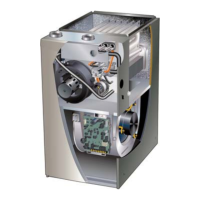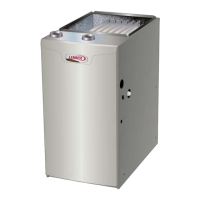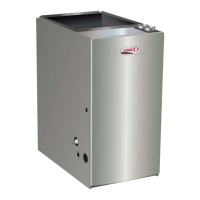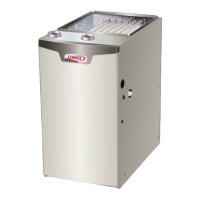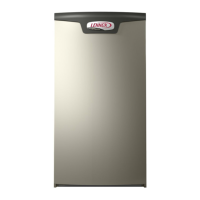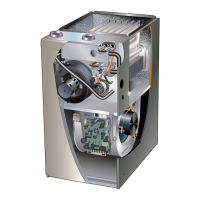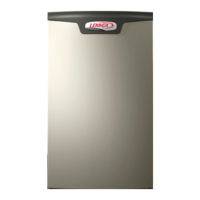Page 3
Safety Instructions
1 - Keep the furnace area clear and free of combustibl
material, gasoline, and other ammable vapors and
liquids. If it is installed in an insulated area, the furnace
must be kept free of insulating material. Insulating ma-
terial may be combustible.
2 - After any heavy snow, ice or frozen fog event, the fur-
nace vent pipes may become restricted. Always check
the vent system and remove any snow or ice that may
be obstructing the intake or exhaust plastic pipes.
3 - DO NOT obstruct air ow to unit. Unit must receive
an unobstructed ow of combustion and ventilating air.
DO NOT block or obstruct air openings on the furnace
or air openings to the area in which the furnace is in-
stalled. Take care to maintain established clearances
surrounding the furnace.
4 - DO NOT store chlorine or uorine products near unit
or introduce these products into the combustion air.
These products can cause furnace corrosion.
5 - DO NOT draw return air from a room where this fur-
nace or any other gas appliance (ie., a water heater),
is installed. When return air is drawn from a room, a
negative pressure is created in the room. If a gas appli-
ance is operating in a room with negative pressure, the
ue products can be pulled back down the vent pipe
and into the room. This reverse ow of the ue gas
may result in incomplete combustion and the formation
of carbon monoxide gas. This toxic gas might then be
distributed throughout the house by the furnace duct
system.
WARNING
The blower door must be securely in place when the
blower and burners are operating. Gas fumes, which
could contain carbon monoxide, can be drawn into the
living space resulting in personal injury or death.
WARNING
CARBON MONOXIDE POISONING HAZARD
Failure to follow instruction could result in severe personal
injury or death due to carbon monoxide poisoning, if
combustion products inltrate into the building.
Check that all openings in the outside wall around
the vent (and air intake) pipe(s) are sealed to prevent
inltration of combustion products into the building.
Check that furnace vent (and air intake) terminal(s) are
not obstructed in any way during all seasons.
Your furnace is a gas appliance. It is critical that the gas
supplied to the unit be completely burned to avoid the pro-
duction of carbon monoxide gas. Complete combustion of
the gas requires, but is not limited to, correct gas pressure
and gas ow rate, adequate combustion, air, and proper
venting.
WARNING
Asphyxiation Hazard
The exhaust vent for this furnace must be leak-free and
must be securely connected to the furnace ue collar
at all times. For your safety and to fulll the terms of
the limited warranty, a licensed professional service
technician (or equivalent) must annually inspect this
furnace and its vent system.
Exposure to carbon monoxide gas can cause personal in-
jury and even death to all occupants, including pets. Any
item that is powered by or gives off heat from a combus-
tion process (including lawn mowers, automobiles, and
replaces) has the potential to produce carbon monoxide
gas. Because of this, Lennox recommends the use of a
carbon monoxide detector in your home, even if you do
not own gas appliances. Reliable detectors are available
at reasonable retail prices. Contact your Lennox dealer for
more details about this investment in your safety.
Your furnace is designed to meet standards set by nation-
al agencies, and to operate safely when properly installed
and maintained. However, the unit’s performance can be
greatly impacted by the individual installation and the op-
erating environment. It is your responsibility to ensure that
this appliance is maintained.
Proper maintenance is critical for your safety and the sat-
isfactory operation of the product. Lennox strongly recom-
mends annual inspection and maintenance of this appli-
ance. Contact your Lennox dealer for an inspection by a
licensed professional service technician.
DANGER
Danger of explosion.
There are circumstances in which odorant used with LP/
propane gas can lose its scent. In case of a leak, LP/
propane gas will settle close to the oor and may be
difcult to smell. An LP/propane leak detector should be
installed in all LP applications. Do not attempt to bleed
the gas lines of air. Call your local gas provider.
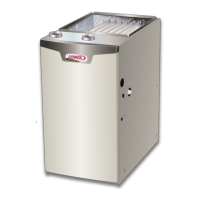
